Recently updated on January 13th, 2025 at 04:57 pm
Cosmology is the scientific study of the large-scale properties and structure of the universe as a whole. It explores the origins, evolution, and eventual fate of the universe, as well as the laws governing its dynamics.
This field combines aspects of astronomy, physics, and mathematics to understand phenomena such as the Big Bang, cosmic inflation, dark matter, dark energy, and the overall shape and expansion of the universe.
Cosmologists use observations from telescopes and other instruments to gather data and develop theoretical models that explain how the universe works.
What is the Big Bang Theory?

The cosmological concept known as the Big Bang Theory explains how the universe came into being 13.8 billion years ago when it rapidly expanded from a boiling and dense state to its current structure and continued growth.
According to the Big Bang Theory, basic particles, atoms, and eventually stars and galaxies were formed when the universe started as an extraordinarily hot and dense singularity that rapidly expanded and cooled over time. Important findings that lend credence to the expanding universe theory include the cosmic microwave background radiation, the abundance of light elements, and the redshift of distant galaxies. This model can explain these. As the universe expands, dark matter and energy play important roles in its structure and evolution.
What evidence supports the existence of dark matter?

The observed gravitational effects on visible matter, such as the rotation curves of galaxies, which show they rotate at speeds that cannot be explained by their visible mass alone, as well as the gravitational lensing of light from distant objects, all point to the presence of unseen mass.
Additional evidence for dark matter includes cosmic microwave background radiation, which shows temperature fluctuations consistent with a universe with more mass than what is visible, as well as the universe’s large-scale structure, where simulations incorporating dark matter accurately match the distribution of galaxies and galaxy clusters. Furthermore, measurements of galaxy clusters, such as the Bullet Cluster, show that the visible mass from colliding galaxies is distinct from the majority of the mass, which is thought to be dark matter, which does not interact electromagnetically and hence remains invisible.
What is cosmic microwave background radiation and its significance?
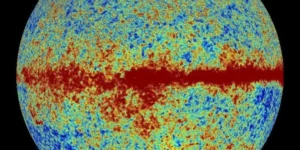
The universe is filled with a relatively uniform background of microwaves known as cosmic microwave background (CMB) radiation. It began to exist some 380,000 years after the Big Bang, when the universe cooled down enough for protons and electrons to combine to form neutral hydrogen and allow light to flow freely.
Its importance goes beyond simply confirming the Big Bang Theory; it also sheds light on the early density fluctuations in the universe that eventually gave rise to galaxy formation and aids in the measurement of parameters such as the Hubble constant, the total mass and energy in the universe, and the universe’s geometry. With the help of comprehensive CMB observations, especially from programs like COBE (Cosmic Background Explorer), WMAP (Wilkinson Microwave Anisotropy Probe), and Planck, scientists have been able to improve their understanding of fundamental physics and develop more accurate models of cosmic development.
How are black holes formed, and what role do they play in the universe?
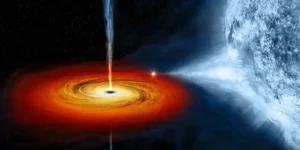
Black holes are often formed in one of two ways: the gravitational collapse of huge stars during supernova explosions, or the merger of smaller black holes and other compact objects.
They serve an important role in the universe because they operate as engines for the energy output of active galactic nuclei, regulate the formation and evolution of galaxies, and influence the migration of stars and gas in their vicinity.
Furthermore, supermassive black holes, which are found at the centres of most galaxies, may help explain the observed correlations between their mass and the properties of their host galaxies, shedding light on the co-evolution of galaxies and black holes throughout cosmic history.
What is the significance of Hubble’s Law?

Hubble’s Law is important for understanding the dynamic character of the universe since it quantifies how galaxies move away from us, implying that the universe has been expanding since its creation. This expansion gives rise to the concept of a homogenous and isotropic cosmos on vast scales, which supports cosmological models that anticipate the universe’s history throughout time.
Astronomers can estimate cosmic distances by measuring the redshift of distant galaxies and applying Hubble Law, which adds to our understanding of the universe’s structure and the behaviour of matter and energy on a large scale.
Furthermore, Hubble’s Law has ramifications for the study of dark energy, as observations of its rate of expansion over time reveal how this unknown entity influences the fate of the universe.
What is baryon acoustic oscillation and its significance in cosmology?

Acoustic waves in the hot plasma before recombination produced periodic variations in the density of baryonic matter (normal matter) in the early cosmos, which are referred to as baryon acoustic oscillations, or BAOs. Its significance in cosmology lies in providing a “standard ruler” for measuring cosmic distances, thereby constraining models of the universe’s expansion and the properties of dark energy.
Baryon acoustic oscillations (BAO) were caused by sound waves propagating through the early universe’s hot plasma, resulting in a regular pattern of density fluctuations that left an impression on the distribution of galaxies and galaxy clusters. This pattern serves as a cosmic scale, allowing cosmologists to precisely measure distances between galaxies and comprehend the geometry of the universe.
By investigating the BAO scale, researchers can determine fundamental cosmological parameters such as the universe’s expansion rate and the impacts of dark energy throughout time, refining models of cosmic development.
How can we determine that the age of the universe is 13.8 billion years?
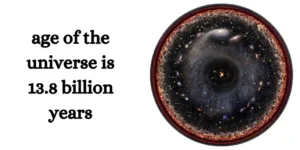
The ages of the oldest known star clusters, the observed expansion rate of the universe using Hubble’s Law, and measurements of the cosmic microwave background radiation all agree with the Big Bang Theory to suggest that the universe is roughly 13.8 billion years old.
The Hubble constant, which indicates the rate of expansion, precise measurements of the cosmic microwave background radiation by missions like Planck, which provide detailed information about the conditions of the early universe, and stellar evolution models, which determine the ages of the oldest star clusters, such as globular clusters, are the main methods used to estimate the age of the universe, which comes out to 13.8 billion years.
Conclusion
Finally, cosmology is a fascinating and active discipline that strives to uncover the universe’s mysteries, from its origins to its large-scale structure and ultimate fate.
Cosmologists investigate basic concerns about dark matter, dark energy, and the very nature of space and time using observations, theoretical models, and modern technologies.
Cosmology not only expands our knowledge of the universe but also inspires significant philosophical questions about existence and humanity’s place within it. With ongoing study and discoveries on the horizon, the quest to comprehend the cosmos continues to inspire and challenge scientists all across the world.




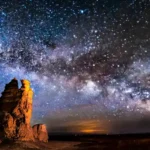

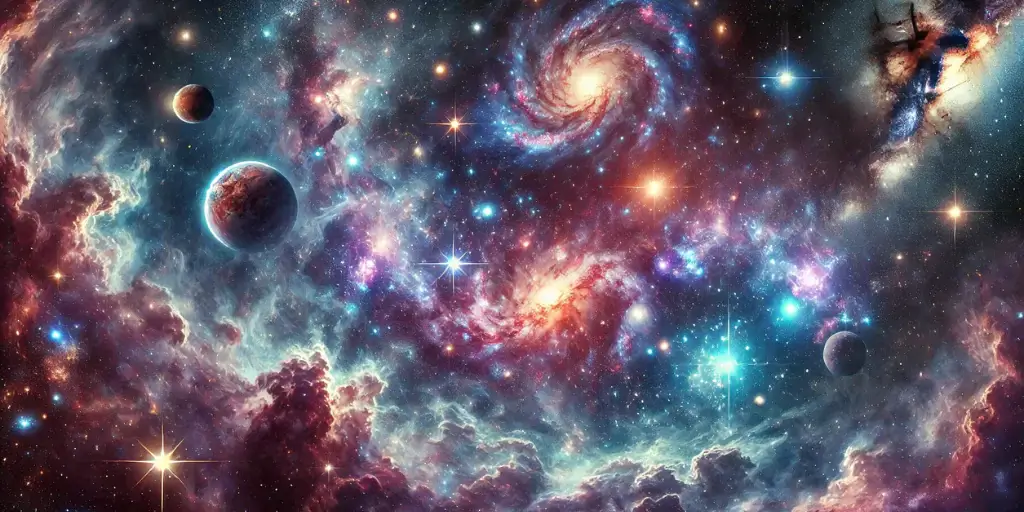
trang chủ 66b
September 26, 2024Giao diện đẹp và dễ sử dụng là một trong những ưu điểm nổi bật của 66b online. Với màu trắng và xanh biển tươi mát làm màu chủ đạo, làm cho giao diện của trang web rất dễ chịu và không nhàm chán.
game xn88
September 26, 2024tải 188v Giao diện website và ứng dụng cũng chính là điểm gây ấn tượng đặc biệt với hội viên. Nền tảng cho sử dụng màu sắc hài hòa, đơn giản nhưng khi kết hợp với nhau tạo cảm giác thu hút đặc biệt. Ngoài ra, hệ thống điều hướng, danh mục đều sắp xếp vô cùng khoa học nên dù bạn có là thành viên mới thì cũng sẽ dễ dàng tìm thấy thông tin mong muốn nhanh chóng.
xn88 casino
September 26, 2024Một trong những yếu tố giúp nổ hũ 66b thu hút và giữ chân người chơi lâu dài chính là hệ thống chính sách khuyến mãi hấp dẫn. Những chương trình khuyến mãi không chỉ mang lại cơ hội gia tăng số dư tài khoản mà còn giúp bạn có thêm động lực tham gia nhiều trò thú vị hơn. Dưới đây là một số loại khuyến mãi tiêu biểu mà khách hàng có thể nhận được khi tham gia vào nhà cái.
888slot có lừa đảo không
September 26, 2024đăng nhập 188v Với tỷ lệ cược hấp dẫn, cập nhật liên tục và nhiều loại kèo đa dạng, bạn sẽ cảm thấy hồi hộp và phấn khích trong từng trận đấu. Các trận đấu được cập nhật trực tiếp giúp bạn theo dõi và điều chỉnh cược một cách dễ dàng.
mã nhận thưởng 888slot
September 26, 2024Không phải ngẫu nhiên mà 66b online lại chiếm được lòng tin của nhiều người chơi đến vậy, để làm được điều này nhà cái đã không ngừng nỗ lực và cải thiện chất lượng dịch vụ của mình để mang lại những thứ tốt nhất dành cho người chơi.